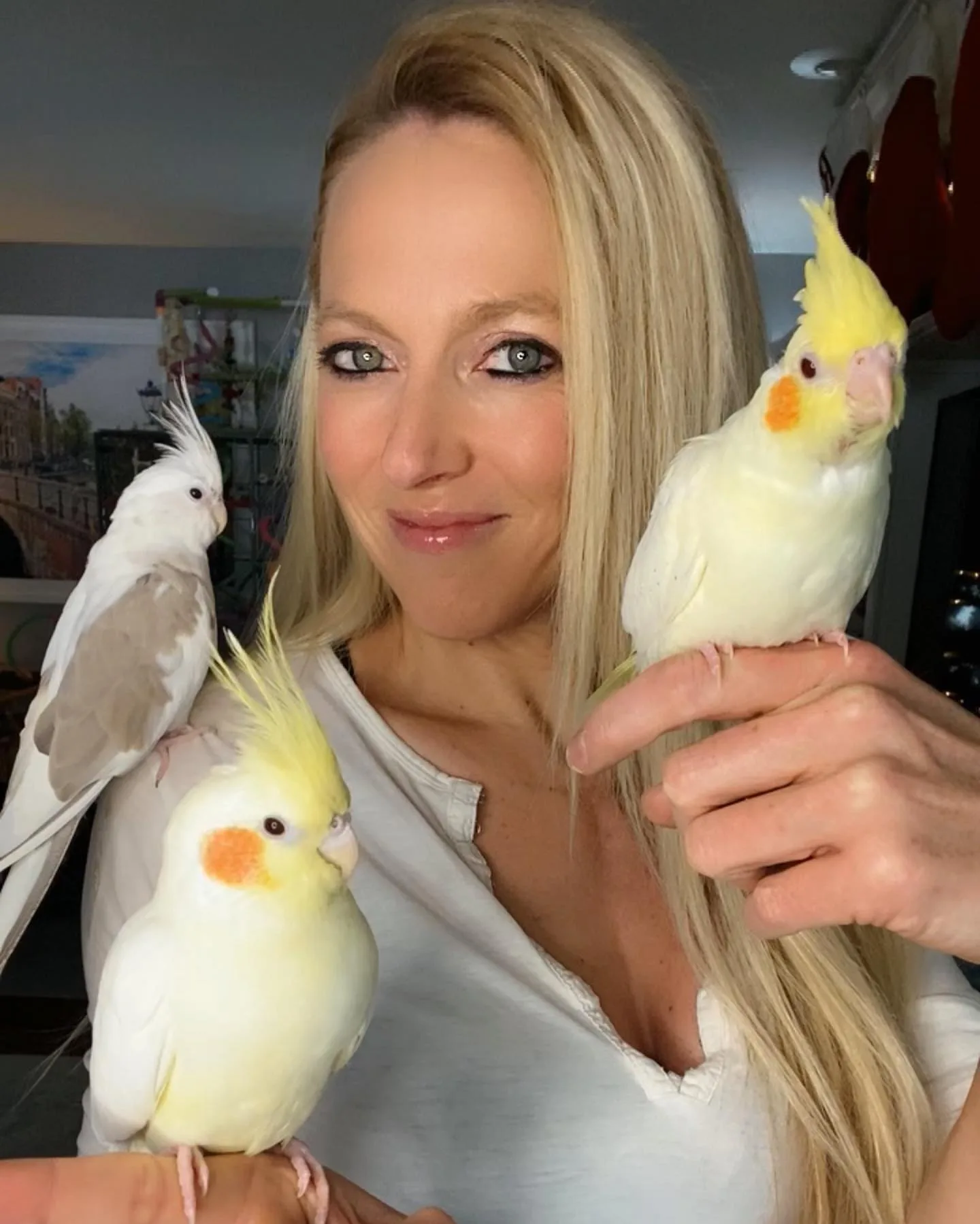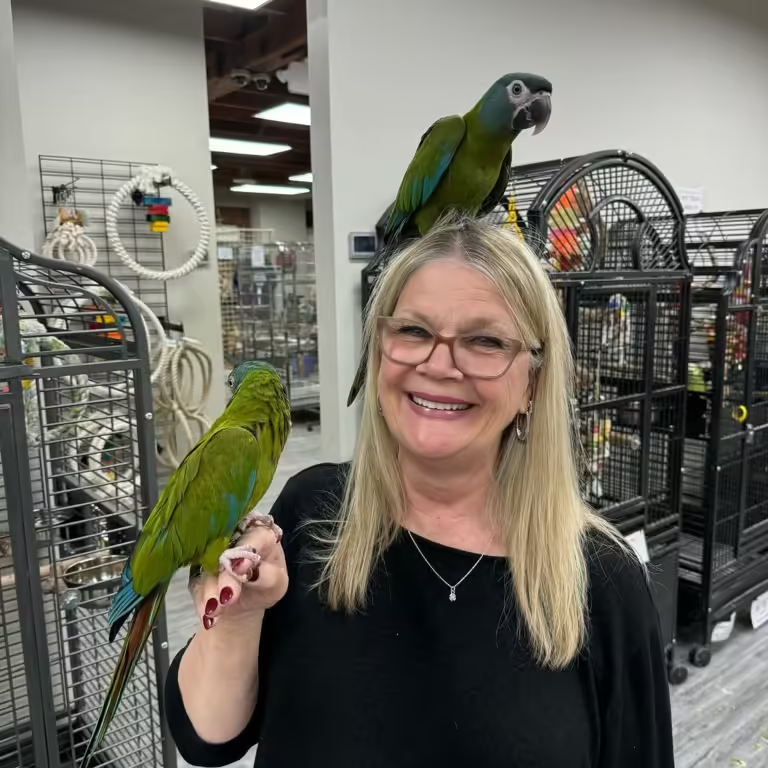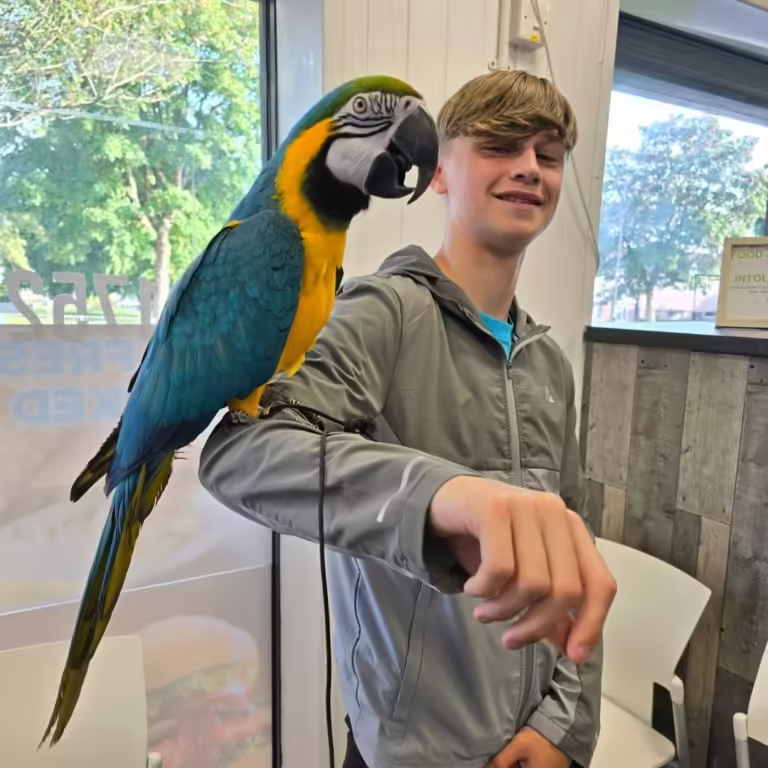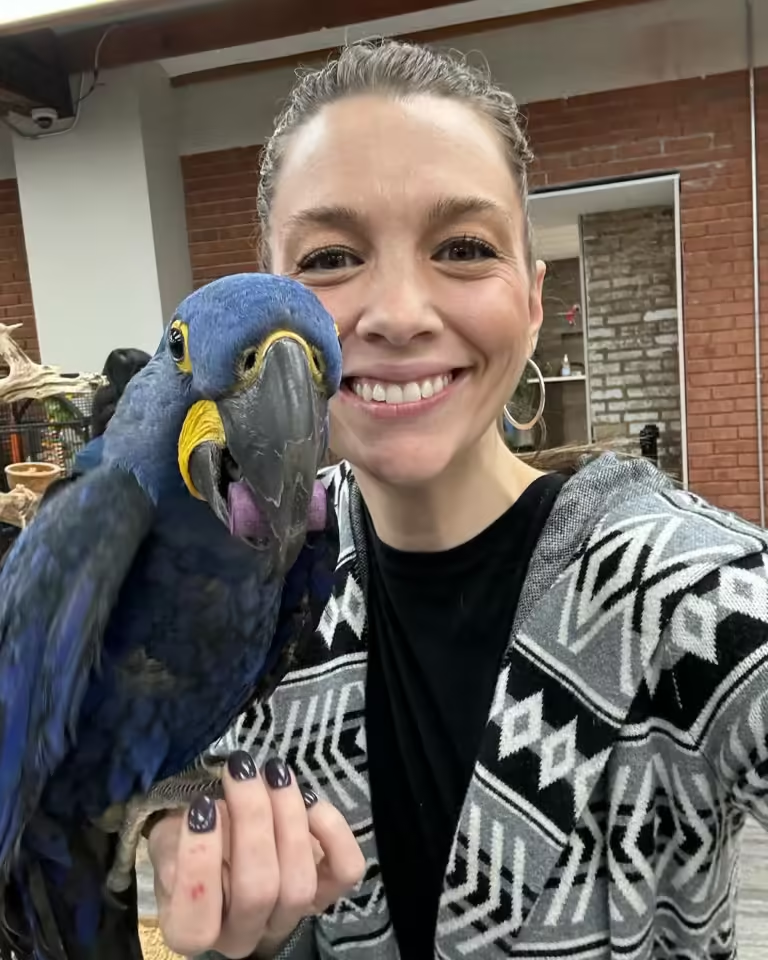- May 23, 2024
Facts About Lovebirds Parrots: 10 Surprising Charms

Looking to learn some fascinating facts about lovebirds parrots? In this listicle, we’ll uncover intriguing tidbits about these colorful and affectionate pet birds, specifically lovebirds, which are little parrots. From their unique courtship rituals to their impressive intelligence, these little parrots with their colorful tail feathers and beaks are truly captivating creatures. So, buckle up and get ready to delve into the enchanting world of lovebirds parrots in an outdoor aviary.
We’ll also discover interesting details about their vibrant plumage, the different species that exist, and their beak. Plus, we’ll reveal some surprising insights into how these little birds, known as lovebirds, communicate with each other and how humans feed them.
Scroll down for a delightful journey through our top picks of fun facts about lovebirds parrots, doves, and their physical characteristics that will leave you amazed and wanting to know more!
Browse our shop for beautiful birds. Find your perfect parrot companion today
-
Sale Product on sale
 My Name is MANGO, Male Conure. 20% Off Today – Don’t Miss Out!
My Name is MANGO, Male Conure. 20% Off Today – Don’t Miss Out!$900.00Original price was: $900.00.$700.00Current price is: $700.00. -
Sale Product on sale
 My Name is BUGER & LEMON, Male & Female Cockatiel. 20% Off Today – Don’t Miss Out!
My Name is BUGER & LEMON, Male & Female Cockatiel. 20% Off Today – Don’t Miss Out!$800.00Original price was: $800.00.$600.00Current price is: $600.00.
Key Takeaways
- Lovebirds, also known as doves, are fascinating parrots known for their strong and lifelong bond with their partner. This unique trait among birds is complemented by their physical characteristics and their diet, which includes nuts and scavicchio.
- These lovebirds and doves communicate with each other through soft chirps, creating a beautiful and melodious atmosphere in their surroundings.
- Lovebirds, with their ability to mimic human speech, are entertaining and interactive pets.
- Expressing affection through preening each other’s feathers is a common behavior among lovebirds, showcasing their deep emotional connection.
- Being highly social birds, lovebirds thrive in the company of their own kind or with human companions, making them great pets for those seeking companionship.
- Providing mental stimulation through toys and activities is crucial for the happiness and well-being of lovebirds, keeping them engaged and preventing boredom.
- Lovebirds have an impressive lifespan of up to 20 years, making them long-term companions that require commitment and care.
- These pet birds, like lovebirds, can form strong bonds not only with their partners but also with their owners, creating a rewarding and fulfilling relationship between bird and human.
1. Lovebirds mate for life
Lovebirds are known for their remarkable ability to form lifelong bonds with a single partner. This unique characteristic sets lovebirds apart from other parrot species, making them a popular pet bird. Once they choose a mate, lovebirds remain devoted and committed to them throughout their lives.
Their loyalty as lovebirds is truly remarkable, as they prioritize their relationship above all else. Lovebirds engage in various bonding behaviors such as preening each other, feeding one another, and spending quality time together. These actions strengthen the emotional connection between them, solidify their bond, and make them lovebirds.
This strong sense of partnership, like lovebird, is not only endearing but also beneficial for the birds’ well-being. Having a lifelong companion provides lovebirds with companionship, social interaction, and emotional support.
In the wild, lovebirds often pair up during breeding season and build nests together. They, like lovebird, take turns incubating the eggs and raising their offspring cooperatively.
The commitment and loyalty exhibited by lovebirds make them a fitting symbol of love and devotion, which is why they are sometimes associated with Valentine’s Day celebrations.
2. They communicate through soft chirps
Lovebirds, those charming little birds with vibrant plumage and distinctive tail feathers, have a unique way of communicating – through soft chirps. These melodious sounds, made by lovebirds, are not only pleasing to the ears but also serve as a means of conveying their emotions and needs.
When lovebirds emit these soft chirps, it is often a sign of affection and contentment. It’s their way of expressing happiness and letting their lovebird flock or human companions know that they are feeling loved and secure. By understanding the meaning behind their chirps, you can establish a deeper connection with your lovebird and strengthen your bond.
Just like humans use words to communicate, lovebirds rely on their beaks to produce these gentle sounds. Each lovebird chirp carries a specific message, whether it’s a call for attention, a request for food, or simply an expression of joy. Paying attention to the context in which these chirps occur can help you decipher what your lovebird is trying to convey.
ext time you hear your lovebird softly chirping away, take a moment to listen and respond. It’s their way of reaching out to you, lovebird, and building a stronger connection. Embrace this unique form of communication and watch as your relationship with your lovebird blossoms.
3. Lovebirds can mimic human speech
Lovebirds, a type of parrot commonly found in aviaries, have an amazing ability to mimic human speech and sounds. With their impressive vocal skills, lovebirds can learn to repeat words and phrases with proper training and interaction. This unique feature, seen in lovebirds, adds an entertaining aspect to their behavior, making them even more endearing as pets.
Lovebirds use their vocal abilities not only to communicate with each other but also to imitate the sounds they hear in their environment. They have the capacity to mimic various sounds, including human speech, whistles, even household noises, and lovebird. It’s fascinating to see these small birds effortlessly imitate human voices and create a bond through shared communication.
While not all lovebirds develop the same level of proficiency in mimicking human speech, many are capable of learning a few words or phrases. The key lies in consistent training and positive reinforcement. By spending time interacting with your lovebird and repeating words or phrases in a clear and distinct manner, you can encourage them to imitate your speech.
f you’re looking for a pet that can bring some extra joy into your life with its ability to mimic your voice, lovebirds are definitely worth considering!
4. They show affection by preening each other
Lovebirds, known for their vibrant colors and playful personalities, have a unique way of expressing their affection: preening each other. This behavior involves one lovebird gently nibbling and grooming the feathers of its partner.
Preening is not only a form of physical care but also a way for lovebirds to strengthen their bond. By preening each other, they engage in mutual grooming, ensuring that their feathers are clean and well-maintained. It’s a display of trust and intimacy between lovebird pairs.
This act of affectionate preening goes beyond just keeping their feathers in good condition. It serves as a means of communication and reassurance within the relationship. Through this behavior, lovebirds demonstrate their commitment to caring for one another.
he next time you observe your lovebirds engaging in preening, remember that it’s not just about maintaining their physical appearance. It’s a beautiful display of love and connection between these charming birds.
5. Lovebirds are highly social birds
Lovebirds, as their name suggests, are known for their strong inclination towards social interaction. These delightful little birds thrive in a social environment where they can engage with others and form strong bonds.
ializing is not just a preference for lovebirds; it is crucial for their overall well-being. They require constant companionship to feel secure and happy. Whether it’s interacting with other lovebirds or humans, these sociable creatures enjoy engaging with their surroundings.
In the wild, lovebirds live in flocks and spend much of their time grooming each other, playing together, and communicating through various vocalizations. This social behavior extends to captive lovebirds as well, making them an excellent choice for individuals seeking a bird companion that craves interaction.
If you decide to bring a lovebird into your home, be prepared to spend quality time with them every day. Interacting with your lovebird through talking, training, and providing enrichment activities will help strengthen your bond and ensure their mental stimulation.
f you’re looking for a bird that thrives on social interaction and enjoys being part of a flock (even if it’s just you), a lovebird may be the perfect feathered friend for you.
6. They have a strong bond with their partner
Lovebirds, true to their name, are known for the deep emotional connection they form with their chosen partner. These small parrots are highly social creatures and thrive on companionship. Once they find their match, lovebirds become inseparable, forming a bond that is built on trust, companionship, and mutual care.
The strong bond between lovebird pairs is truly remarkable. They engage in various bonding behaviors such as preening each other’s feathers, sharing food, and even sleeping close together. This level of intimacy not only strengthens their relationship but also enhances their overall well-being.
Having a devoted partner has numerous benefits for lovebirds. It provides them with a sense of security and comfort in their surroundings. They rely on each other for emotional support and companionship, which contributes to their happiness and contentment.
7. Lovebirds enjoy playing with toys
Lovebirds, the popular pet birds known for their vibrant colors and playful nature, absolutely adore playing with toys. Providing them with a variety of toys not only keeps them entertained but also offers essential mental stimulation.
Toys play a crucial role in preventing boredom for lovebirds, as these little parrots are highly intelligent creatures that require constant engagement. By offering interactive toys such as puzzle feeders and treat-dispensing toys, you can keep your lovebird mentally stimulated and occupied.
Moreover, playing with toys promotes physical activity for lovebirds. They love to explore and interact with objects in their environment, and having toys to play with allows them to exercise their beaks, claws, and wings. This helps maintain their physical health and prevents them from becoming sedentary.
Whether it’s colorful hanging toys or chewable wooden blocks, providing a variety of toys ensures that your lovebird remains engaged and active throughout the day. So go ahead and create an enriching environment for your feathered friend by offering a selection of stimulating toys!
8. They need mental stimulation for happiness
Lovebirds are intelligent and social creatures that require mental stimulation for their overall well-being. Providing them with a variety of toys, puzzles, and activities is crucial to keep them mentally sharp and happy.
By offering challenges and interactive play, you can engage their curious minds and prevent behavioral issues that may arise from boredom or lack of mental stimulation. Lovebirds enjoy exploring their environment, solving puzzles, and learning new tricks through training sessions.
It’s important to note that lovebirds should never be given chocolate as it is toxic to them. Instead, focus on providing them with safe and engaging toys that stimulate their senses.
Creating an enriching environment with enough space for them to fly around and explore will also contribute to their mental well-being. Lovebirds thrive when they have opportunities to engage in natural behaviors such as climbing, chewing, and foraging.
9. Lovebirds can live up to 20 years
Lovebirds are known for their long lifespan, with some individuals living up to 20 years. This is a significant commitment for potential owners, as it means providing care and attention for many years to come.
Proper care and nutrition play a crucial role in ensuring the longevity of lovebirds. A balanced diet consisting of fresh fruits, vegetables, seeds, and pellets is essential for their overall health. Regular veterinary check-ups can help detect any potential health issues early on.
Creating a stimulating environment is also important for lovebirds’ well-being. Providing them with plenty of toys, perches, and opportunities for social interaction can keep them mentally and physically active.
Understanding the lifespan of lovebirds allows prospective owners to make an informed decision about committing to their long-term care. It’s important to consider the time, effort, and resources required to provide a loving and nurturing environment throughout their lives.
10. They form strong bonds with their owners
Lovebirds are known for their ability to form strong bonds with their human caretakers. These charming pets have the unique characteristic of developing deep connections with their owners, making them cherished companions.
Building a bond with a lovebird requires time and effort. By spending quality time together and consistently showing care and affection, owners can establish trust and strengthen the bond. Lovebirds thrive on attention and interaction, so it’s important to engage with them regularly.
Lovebirds demonstrate their loyalty towards their owners through various behaviors. They may seek physical contact by snuggling up against their owner’s hand or shoulder. Some lovebirds even enjoy gentle scratches or head rubs. This display of affection creates a special connection between the bird and its owner.
In addition to forming strong emotional bonds, lovebirds also appreciate treats and nuts as part of their diet. It’s essential for owners to provide a well-balanced diet that includes fruits, vegetables, seeds, and pellets suitable for lovebirds.
Final Remarks
Congratulations! You now have a solid understanding of lovebirds and their fascinating characteristics. These beautiful parrots are not only known for their vibrant colors but also for their unique behaviors that make them such beloved pets. From their lifelong commitment to their partners to their ability to mimic human speech, lovebirds truly capture our hearts.
But owning a lovebird comes with responsibilities. Remember to provide them with mental stimulation through toys and interactive playtime. Keep in mind that lovebirds thrive on social interaction, so make sure they have plenty of time outside their cage and opportunities to bond with you. And don’t forget about regular vet check-ups to ensure their health and well-being.
hether you’re considering getting a lovebird or already have one as a companion, remember to shower them with love, care, and attention. They will reward you with their charming personalities and endless affection. Enjoy the journey of discovering more about these delightful creatures!
Frequently Asked Questions
Can lovebirds learn to mimic human speech?
Yes, lovebirds have the ability to mimic human speech. They are highly intelligent birds and can be trained to imitate words and phrases with consistent practice and patience.
How long do lovebirds usually live?
Lovebirds have a relatively long lifespan compared to other parrot species. On average, they can live up to 20 years or even longer with proper care, nutrition, and a suitable environment.
Do lovebirds form strong bonds with their owners?
Yes, lovebirds have the capability to form strong bonds not only with their partners but also with their owners. With regular interaction, socialization, and positive reinforcement training, they can become affectionate and develop a close relationship with their human caregivers.
Are lovebirds sociable birds?
Absolutely! Lovebirds are highly social creatures that thrive on companionship. They enjoy the company of other lovebirds and also appreciate being part of a flock or having interaction with their owners.
What kind of mental stimulation do lovebirds need?
To keep lovebirds mentally stimulated and happy, provide them with a variety of toys that encourage exploration, problem-solving, and physical activity. Toys such as puzzle feeders, swings, bells, and chew toys are great options to keep them engaged and entertained.
Tags
What do you think?
Related Articles

Find Parrots for Sale in Aurora IL: Top 5 Must-Visit Spots
Finding the perfect parrot in Aurora, IL, is an exciting adventure for bird lovers. This city offers various options for

Find Parrots for Sale in Trenton NJ: Top 5 Must-See Spots!
Finding the perfect parrot can be a fun adventure. Trenton, NJ, offers plenty of options for bird lovers. From local

Find Parrots for Sale in Woodbridge Township NJ: Top 5 Must-See Spots!
Finding the perfect parrot can be a fun adventure. Woodbridge Township, NJ offers plenty of options for bird lovers. From


